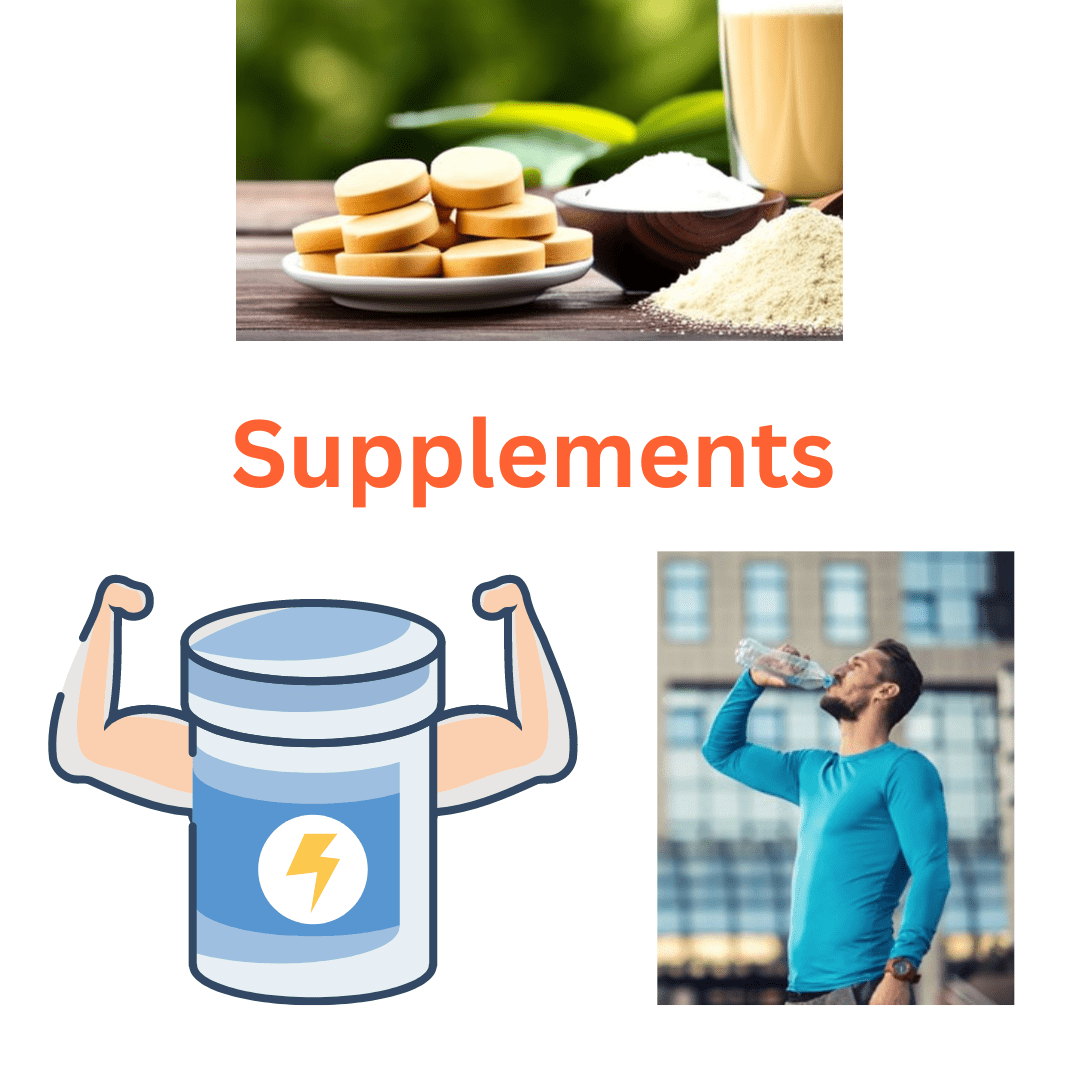Tracking Your Way to Fat Loss Success
Hey, you! Yes, you, the one with the secret desire to shed those extra pounds and rock that little black dress like a superstar. Well, guess what?
Tracking your food intake, exercise, and body measurements is the secret weapon you’ve been waiting for. It may not sound as glamorous as a magic pill or a fairy godmother, but let me tell you, it works like a charm. When you track your journey towards losing body fat, you gain insights that will leave Cinderella in awe. So, get ready to follow your way to a happily ever after with a body that turns heads and steals the show!
Tracking your food intake, exercise, and body measurements may seem tedious, but losing fat can be a game-changer. Research has shown that those who follow their progress are more likely to achieve their weight loss goals than those who do not.
Science Proves Tracking Works!
A recent 2021 study published in Obesity by a Stanford researcher reveals that tracking your weight loss progress with digital health tools significantly increases your chances of success. The analysis, which examined nearly 40 studies on weight-loss monitoring, found that individuals who consistently tracked their diet and physical activity with tools like smartwatches and diet-monitoring websites tended to lose more weight than those who used traditional methods. The convenience and ease of digital tools make calorie counting and nutrient tracking simpler. At the same time, the engagement factor, such as visual cues and networking options, further motivates you to achieve your goals.
Explanation of Why Tracking is Important for Fat Loss
Tracking is crucial for fat loss because it allows you to gain insight into your habits and identify areas where there is room for improvement. It also helps you set realistic goals and keeps you accountable by providing factual data on how well you are sticking to your plan. One key reason tracking is so important for fat loss is that it allows for understanding caloric intake and expenditure.
It would help to know how many calories you consume each day and how much you burn through exercise and other activities to create the calorie deficit required for fat loss. By tracking these factors closely, however, it becomes easier to see where adjustments need to be made in order to achieve results.
Another benefit of tracking is that it allows individuals trying to lose fat to identify patterns and areas for improvement. For example, if someone notices they tend to snack excessively in the evenings while watching television or browsing social media on their phone, this may allow them to make changes that can help them stay on track.
Tracking provides accountability and motivation. Seeing progress over time can help maintain high motivation levels while keeping one accountable by providing insights into whether they are hitting their goals.
Brief Overview of What Will Be Covered in The Article
This article will cover everything readers need to effectively track their journey toward losing body fat. We will explore all related aspects, including caloric intake calculations, macronutrient breakdowns, types of exercise to track, and progress measurement methods that accurately show how well someone’s body composition changes over time. By the end of this article, readers will understand how to track their food intake and daily activity levels effectively.
Tracking is a vital part of losing fat.
Anyone who wants to lose weight should start tracking their caloric intake, macronutrient breakdowns, physical activity levels, body measurements, and progress photos. An effective tracking strategy can provide insights into one’s habits and help identify areas for improvement while keeping them accountable and motivated throughout the process.
Why Tracking is Important for Fat Loss
Understanding Caloric Intake and Expenditure
One of the main reasons tracking can help with fat loss is to understand your caloric intake and expenditure better. By tracking what you eat and how much you exercise, you can calculate your daily caloric needs and determine if you’re in a calorie deficit or surplus. Creating a calorie deficit, where you burn more calories than you consume, is necessary for fat loss.
Without tracking, it isn’t easy to know if you’re consuming too many or too few calories. Additionally, tracking helps you identify which foods are high in calories and which provide little nutritional value.
For example, one slice of pizza can contain over 300 calories, while a cup of mixed veggies only has around 50 calories. Keeping track of what you eat throughout the day makes it easier to make healthier food choices that align with your weight loss goals.
Identifying Patterns and Areas for Improvement
Tracking also allows you to identify patterns in your eating habits that may be hindering your progress. For example, if every night after dinner, you find yourself snacking on high-calorie foods like chips or ice cream while watching TV, that habit could be contributing to weight gain.
Once identified through tracking food intake logs or journaling exercises regularly over time (at least a few weeks), improving these patterns can be more manageable. Similarly, exercise logs can help identify weaknesses or areas where improvements need to be made to reach fitness goals faster than other methods, such as trial-and-error guessing games with workouts without meaningful data points at hand.
Accountability and Motivation
Tracking provides accountability by holding yourself accountable for what you eat & do each day instead of relying on memory alone — which can often prove unreliable when it comes time to review progress. By having a record of your food intake and exercise, you can see where you need to make changes.
Also, tracking calories, macros, or fitness goals with the help of tools like apps or journals regularly over time (at least a few weeks) may motivate you to continue making better choices conducive to successful weight loss outcomes. When it comes down to it, tracking for fat loss is necessary because it provides insight into your habits and behaviors around food and exercise.
With this insight, it’s easier to understand what changes must be made to achieve your goals. Additionally, tracking can provide accountability and motivation along the way — both essential ingredients for long-term success.
What to Track for Fat Loss
Body Measurements: Weight, Body Fat Percentage, Waist Circumference
When it comes to tracking exercise for fat loss, body measurements are an essential component. Weight is the most straightforward measurement to track and provides a good baseline for progress. Three important measurements to track include weight, body fat percentage, and waist circumference.
However, more than weight is needed to give a complete picture of changes in body composition. Body fat percentage is a more accurate indicator of overall health and fitness level.
It measures the proportion of fat to muscle mass and provides insight into changes in body composition as one exercise. Waist circumference is another critical measurement as it can indicate potential health risks associated with carrying excess belly fat.
Women with waist measurements greater than 35 inches and men with measurements greater than 40 inches have an increased risk of developing health issues such as type 2 diabetes or heart disease. Regularly tracking these three measurements can help individuals stay motivated on their fitness journey by seeing tangible progress over time.
Caloric Intake
Keeping track of caloric intake is crucial when trying to lose fat. It’s essential to know how many calories you consume daily to create a calorie deficit and lose weight.
There are different ways to keep track of your caloric intake, including writing it down in a journal or using an app like MyFitnessPal or Lose It! When tracking, ensure you include everything that goes into your mouth, as even small snacks or drinks can add up quickly.
How to Calculate Daily Caloric Needs
Calculating your daily caloric needs is the first step in determining how many calories you should consume daily for fat loss. You can use online calculators such as the Harris-Benedict Equation or the Mifflin-St Jeor Equation, which consider your age, height, weight, and activity level. Once you have this number, you can adjust it based on your goals and create a calorie deficit by reducing your daily caloric intake.
Importance of Tracking Macronutrients
Tracking macronutrients (carbohydrates, protein, and fat) is important because it helps ensure that you’re getting the right balance of nutrients for optimal health and body composition changes. Protein is especially important for muscle growth and repair, while carbohydrates provide energy for physical activity.
Fat plays an essential role in hormone regulation and brain function. When tracking macronutrients, aim for a balanced intake based on your individual needs.
Physical Activity
Physical activity is important for overall health and plays a key role in fat loss. Tracking physical activity allows you to see how many calories are burned during exercise, which helps create a calorie deficit.
Tracking the type of exercise and duration can help you identify areas to improve and adjust as needed. Aim for a combination of resistance training and cardiovascular exercise for optimal results. Plus, cardio and strength training are important for longevity.
Exercise Measurements: Reps, Sets, Weights Lifted, Time Spent Exercising
Another critical aspect of tracking exercise for fat loss include measuring workout performance metrics such as reps, sets, weights lifted, and time spent exercising. Reps refer to the number of times an individual completes a specific exercise movement in one set.
Sets refer to the number of cycles or groups of reps performed during a workout session. Weights lifted refers to how much weight an individual lifts during an exercise movement.
This metric can help individuals monitor their progress over time by increasing the weight lifted as they become stronger. Time spent exercising is also essential and should be tracked regularly.
Tracking workout duration can help individuals ensure they are meeting recomm
Cardiovascular Measurements: Heart Rate, Distance Covered
Cardiovascular measurements are an essential part of tracking exercise for fat loss. Two key metrics to track include heart rate and distance covered. Heart rate is the number of times a person’s heart beats per minute and provides insight into one’s cardiovascular fitness level.
By tracking resting heart rates over time, individuals can monitor their progress as their bodies become more efficient at pumping blood during exercise. Distance covered refers to how far an individual runs or walks during a workout.
This metric is handy for those who engage in cardio-based exercises such as running or cycling. By regularly monitoring these metrics via wearable technology or fitness apps that help track progress, individuals can get the most out of each workout while maintaining healthy cardiovascular levels.
Importance of Tracking Progress
Tracking progress is essential not only for motivation but also to see if your efforts are paying off. Taking progress photos or measurements allows you to visually see changes in your body composition while keeping track of physical activity, and caloric intake provides data on whether you’re on track to meet your goals or need to make adjustments. Additionally, tracking progress helps identify patterns that can lead to better decision-making regarding what’s working and what’s not.
Overall, several things should be tracked when trying to lose fat, including caloric intake, macronutrients, physical activity, types of exercise performed, and progress photos or measurements. By monitoring these things consistently over time, you’ll be able to identify areas where improvements can be made, leading to greater success in achieving your goals.
How to Track Fat Loss
Tracking your food intake, physical activity, and body composition is crucial in achieving your fat loss goals. Fortunately, there are various tools and methods that you can use to monitor your progress easily.
Food Journaling Apps and Websites
One of the most popular ways to track food intake is by using a food journaling app or a website such as MyFitnessPal or Lose It! These apps allow you to log your meals and snacks, track macronutrients such as carbs, protein, and fat, and even scan barcodes to enter nutritional information quickly.
Measuring and weighing your food portions is essential to use these apps effectively. This will ensure that the calorie and macronutrient values entered into the app are accurate.
Additionally, it’s recommended to log everything you eat or drink throughout the day rather than just at the end of the day. This will help identify areas where you may be overeating or lacking certain nutrients.
Physical Activity Trackers
Physical activity trackers such as Fitbit or Apple Watch can also help track daily movement and exercise. These devices have sensors that track steps taken, calories burned, heart rate, and even sleep patterns.
A physical activity tracker can provide accountability for meeting daily movement goals, such as taking 10k steps daily or reaching a certain number of weekly workouts. Additionally, some trackers offer reminders to get up from sitting every hour, which can be helpful for those with sedentary jobs.
Measuring Body Composition Changes
Measuring changes in body composition is important for tracking progress beyond just weight loss. There are various methods for measuring body composition, including skinfold calipers which measure subcutaneous fat thickness at different points on the body, and bioelectrical impedance analysis (BIA), which uses electrical currents to estimate body fat percentage.
It’s important to note that these methods can have a degree of error and may not accurately reflect changes in muscle mass or water weight. However, tracking body composition changes can give insight into whether weight loss is primarily from fat or muscle loss.
How Often to Measure
The frequency at which you should measure progress depends on various factors, such as personal preference and the rate at which you are making progress, for most people, weighing themselves once a week and measuring body composition once a month is sufficient.
However, it’s essential to stay focused on the numbers and remember that they are just one aspect of progress. Other non-scale victories, such as increased energy levels or clothing fitting better, can also indicate progress toward fat loss goals.
Tracking for Fat Loss: A Key to Success
Tracking is essential for anyone looking to lose weight and body fat. By regularly monitoring your caloric intake, macronutrient ratios, physical activity, and body composition changes, you can identify patterns and areas for improvement in your diet and exercise regimen. Tracking can be made easy and convenient through food journaling apps/websites, physical activity trackers, and body composition measurement tools such as skinfold calipers or bioelectrical impedance analysis (BIA).
The key takeaways from this article are:
- Tracking your food intake helps you stay accountable to your goals.
- Regularly measuring your progress allows you to adjust your diet/exercise routine.
- Focusing on macronutrients is just as important as total calories.
- Being consistent with tracking works best when it becomes a habit.
Remember that weight loss isn’t always linear – there will be ups and downs. However, consistently using tracking tools gives you a better idea of what’s working well for you and what needs improvement.
So if you’re serious about getting leaner and healthier, start tracking today! With perseverance and consistency in using these methods for monitoring progress towards fat loss goals, success is achievable.
When it comes to tracking progress in a fitness program, many people turn to the scale as their primary measure of success. However, the number on the scale can be misleading, especially for those who are trying to lose fat and build muscle. That’s why it’s important to track body fat percentage, which provides a more accurate measure of your body composition.
Measuring Body Fat
There are several ways to measure body fat, including skinfold calipers, bioelectrical impedance analysis, dual-energy X-ray absorptiometry (DXA), and underwater weighing. Each method has its pros and cons, but they all provide a more accurate picture of your body composition than the scale alone.
Why BMI is a Poor Indicator of Overfat/Overweight
Many people rely on body mass index (BMI) as a measure of their health and fitness level. However, BMI is a poor indicator of overfat/overweight because it doesn’t take into account muscle mass or body fat percentage. For example, a person with a high level of muscle mass may have a high BMI but a low body fat percentage, while a person with a low level of muscle mass may have a low BMI but a high body fat percentage.
Don’t Focus on the Scale. Focus on Body Fat
When trying to lose fat and build muscle, it’s important to focus on body fat percentage rather than the number on the scale. This is because the scale doesn’t differentiate between fat loss and muscle loss (including impacts to metabolism). By tracking your body fat percentage, you can ensure that you’re losing fat while maintaining or even building muscle.
Tracking body fat percentage is a critical part of any fitness program focused on fat loss. By using more accurate measures of body composition than the scale alone, you can ensure that you’re making progress towards your goals and achieving the body composition you desire. So don’t just rely on the scale – measure your body fat percentage regularly and adjust your exercise and nutrition program accordingly.
Reference:
Patel, M. L., Wakayama, L. N., & Bennett, G. G. (2021). Self-Monitoring via Digital Health in Weight Loss Interventions: A Systematic Review Among Adults with Overweight or Obesity. Obesity, 29(3), 478-499. https://doi.org/10.1002/oby.23088









